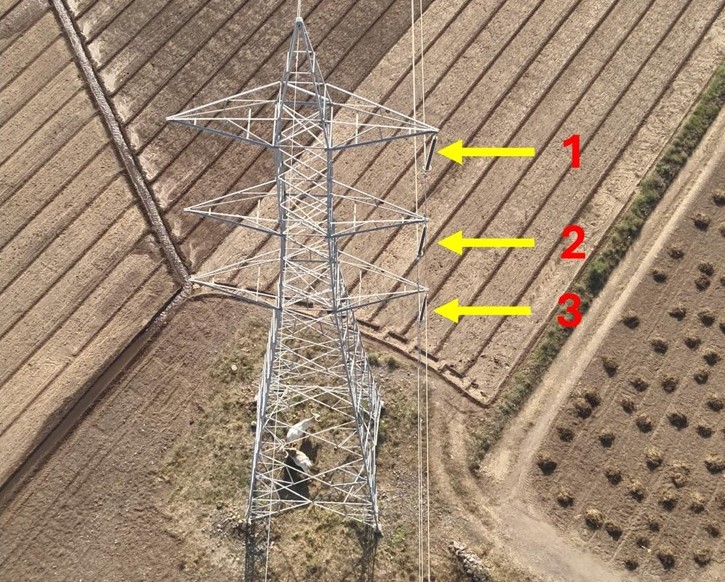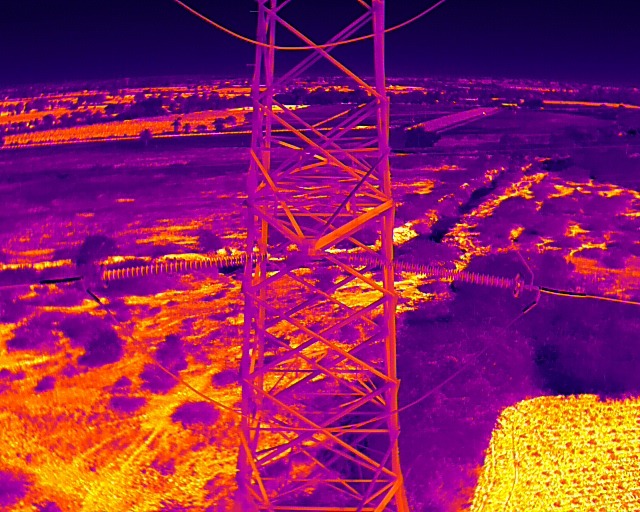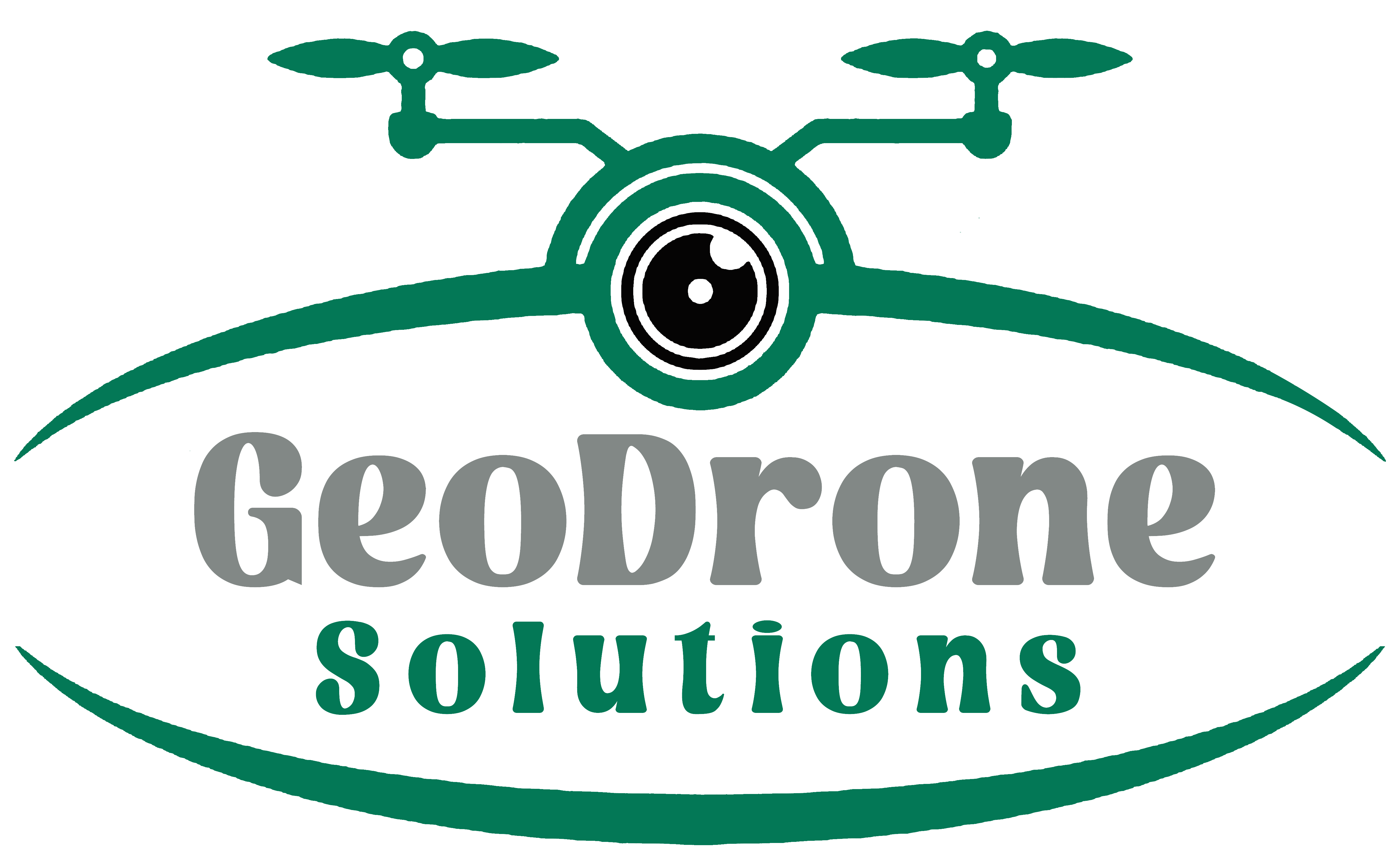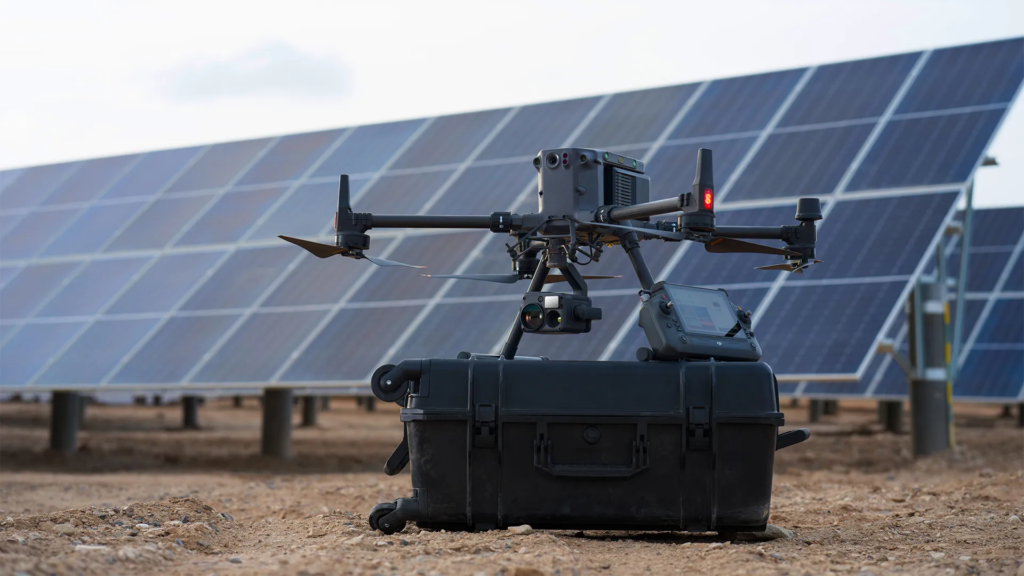Power lines form the backbone of our electrical grid—but inspecting them manually is slow, costly, and often dangerous. Enter Thermography for Power Line Inspection Using Drones, a modern solution that brings speed, safety, and unmatched accuracy to grid maintenance.
By combining thermal imaging with aerial drone technology, utility providers and grid operators can now detect hotspots, insulation failures, and connection issues—before they cause outages or hazards.

What is Thermographic Power Line Inspection?
Thermographic inspection uses infrared (IR) cameras to detect temperature anomalies in power lines, insulators, conductors, and connectors. Elevated heat levels often indicate electrical faults, loose joints, or overloads.
When mounted on drones, thermal sensors allow utility teams to inspect kilometers of transmission and distribution lines quickly and without disruption.

Why Use Drones for Power Line Inspections?
Traditional power line inspections are labor-intensive, hazardous, and expensive. They often require helicopters, scaffolding, or climbing poles.
Drones offer a smarter solution:
- Safety: Reduce the need for human exposure to high-voltage zones.
- Efficiency: Cover long stretches of lines in a fraction of the time.
- Reduced Maintenance Costs: Save on equipment, manpower, and downtime.
- Early Fault Detection: Identify heating patterns caused by overloading, corrosion, or damaged components—before a breakdown happens.
- Accurate Geotagging: Thermal and RGB images are mapped with GPS coordinates for precise fault localization.
When equipped with thermal cameras, drones can fly near energized lines, detect temperature differences, and record high-resolution thermal and RGB data for detailed analysis.
Project Workflow of Power Line Inspection
- Pre-Mission Planning
- Flight Execution
- Data Collection
- Post-Processing
- Reporting
Benefits of Drone-Based Thermography
- Proactive Maintenance: Detect issues before they cause outages
- Data Accuracy: High-resolution thermal images with precise GPS tagging
- Minimal Disruption: No need to shut down power lines during inspection
- Environmental Monitoring: Also detect vegetation encroachments and environmental hazards
Conclusion
Thermography combined with drone technology is a revolutionary step forward in maintaining the health and safety of power infrastructure. From early fault detection to efficient maintenance planning, the benefits are clear. As drone tech continues to evolve, its role in power grid management will only grow stronger.
Have questions or interested in starting your own drone inspection project? Drop a comment below or get in touch!

